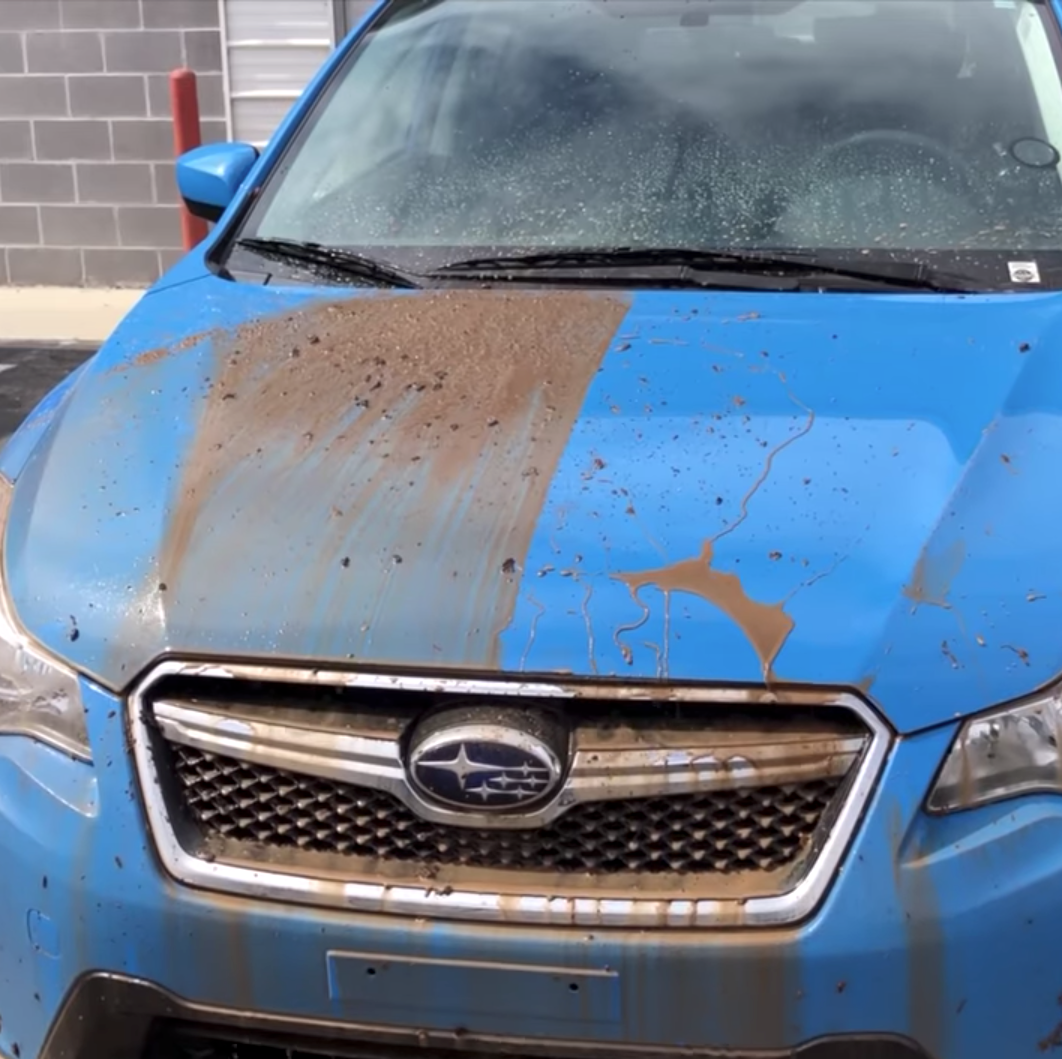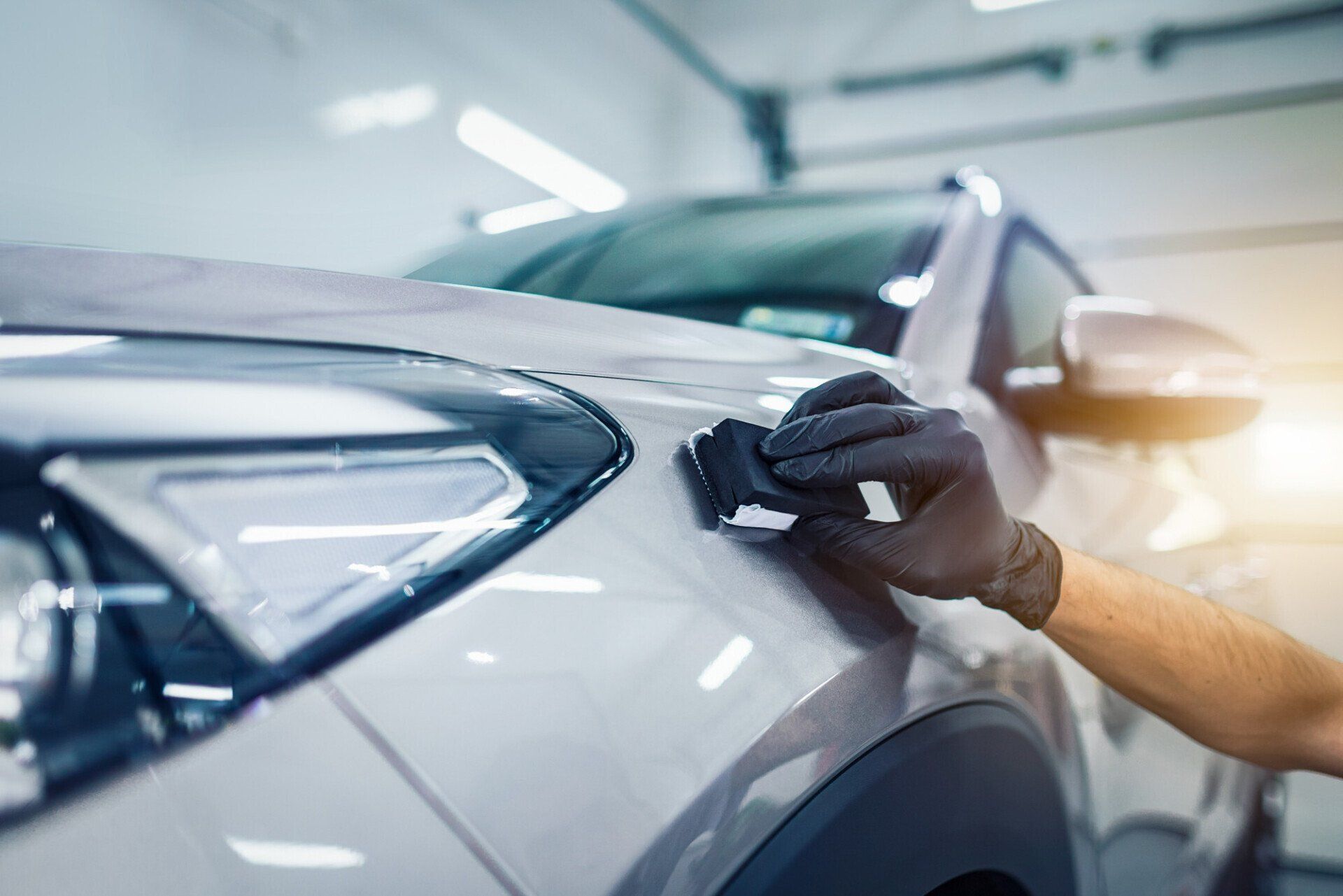Checking out the Science Behind Car Ceramic Coating and Its Safety Qualities
The science of car ceramic coating presents a remarkable research in sophisticated auto defense. Composed mostly of silicon dioxide and polymers, these coverings create a robust bond with automobile paint. This communication enhances toughness versus ecological risks while offering hydrophobic benefits. Nonetheless, the complexities of just how these coverings job and their long-lasting benefits remain less recognized. Unloading these details reveals why ceramic finishes are becoming a preferred option for lorry treatment
What Is Ceramic Coating?
Ceramic coating is a fluid polymer that chemically bonds to the surface area of a car's paint. This innovative protective layer improves longevity and provides superior resistance to ecological factors. Unlike typical wax or sealers, which give short-lived defense, ceramic finishings create a long-lasting guard that can endure extreme conditions such as UV rays, acidic pollutants, and severe weather. When used appropriately, the coating develops a hydrophobic surface area, causing water to bead and slide off, which aids in keeping the vehicle's sanitation. Furthermore, it supplies boosted gloss and depth to the paint, making the lorry appear even more refined and lively. The application procedure typically entails extensive surface preparation, including cleansing and polishing, to guarantee peak bonding. Therefore, ceramic finishes are ending up being progressively preferred among car fanatics and those seeking to shield their financial investments, promising to preserve the lorry's aesthetic allure while minimizing the regularity of upkeep.
The Structure of Ceramic Coatings
The intricate formulation of ceramic coatings mainly includes silicon dioxide (SiO2), which is stemmed from all-natural resources like quartz and sand. This vital component provides the foundation for the coating's durability and protective top qualities. In enhancement to SiO2, ceramic finishes frequently consist of numerous polymers and ingredients that boost adhesion, flexibility, and resistance to ecological elements. These compounds function synergistically to produce a robust barrier against impurities such as dust, chemicals, and UV rays.Furthermore, some formulations integrate titanium dioxide (TiO2) or other nanomaterials, which can boost the coating's hydrophobic residential or commercial properties, resulting in better water repellency. The specific make-up can vary considerably among makers, influencing efficiency and durability. Inevitably, the mix of these aspects finishes in a safety layer that not just boosts the aesthetic appeal of vehicles but likewise offers to prolong their life expectancy by protecting the surface area from prospective damage.
Exactly How Ceramic Coatings Job
Recognizing just how ceramic coverings function includes exploring their chemical structure, which adds to their protective high qualities. The application process is essential for achieving excellent outcomes, while longevity and toughness variables identify the coating's performance over time. Together, these aspects highlight the advantages and efficiency of ceramic coverings for vehicle defense.
Chemical Make-up Explained
While several car proprietors look for lasting defense for their cars, the chemical composition of ceramic layers plays a vital function in their effectiveness. These finishings largely include silicon dioxide (SiO2), which is obtained from all-natural minerals. This compound develops a solid bond with the lorry's paint, developing a sturdy, safety layer. Furthermore, several ceramic coverings consist of titanium dioxide (TiO2), enhancing their hydrophobic properties and resistance to UV rays. The visibility of polysiloxanes can additionally improve flexibility and longevity. Together, these components contribute to the coating's capacity to push back water, dust, and contaminants, while likewise providing a high-gloss surface. Recognizing this chemical foundation aids car proprietors value the robust security supplied by ceramic coverings.
Application Process Overview
Using ceramic coatings includes a thorough procedure that assures optimal bonding and security for the lorry's surface. At first, comprehensive cleaning and purification of the car's outside are executed to remove dust, gunk, and previous waxes. This step confirms that the surface is free from pollutants that could hinder adhesion. Following this, the paint is frequently polished to improve clarity and eliminate any type of imperfections. Once prepared, the ceramic coating is applied in small sections using an applicator pad, allowing for uniform coverage. The coating is then entrusted to heal, developing a strong chemical bond with the surface area. Appropriate treating times and problems are essential, as they confirm the coating achieves its optimum effectiveness and protective qualities.
Longevity and Toughness Variables
Ceramic layers are designed to offer resilient protection with their innovative chemical composition, which produces a robust obstacle versus ecological contaminants. The toughness of these coverings is influenced by factors such as the density of the application, the top quality of the product, and the conditions under which the vehicle is subjected. Premium ceramic coverings click here for more can last several years, standing up to scratches, UV rays, and chemical stains. Correct upkeep, including regular washing and periodic reapplication, can better enhance durability. In addition, environmental aspects like climate and exposure to toxins can affect the lifespan of the coating. Generally, when used and kept correctly, ceramic coatings supply phenomenal sturdiness, making them a preferred selection for car fanatics looking for to maintain their automobile's look.
Hydrophobic Features and Water Repellency
Hydrophobic buildings are a characteristic of high quality car ceramic coverings, significantly boosting the car's surface efficiency. These coatings create a molecular bond with the car's about his paint, causing a surface that drives away water efficiently. When water enters contact with a ceramic-coated surface, it beads up and rolls off, minimizing the amount of liquid that stays on the paint. This behavior not just adds to a visually pleasing appearance yet likewise lowers the accumulation of pollutants such as dirt, gunk, and roadway salts.The enhanced water repellency leads to less complicated cleaning and maintenance, as less initiative is called for to get rid of unwanted substances. Additionally, the hydrophobic nature of ceramic finishes assists in stopping water areas, which can mar the coating of uncoated surfaces. On the whole, the unification of hydrophobic homes in ceramic coatings plays an important role in preserving the car's beautiful look while streamlining maintenance.
Security Against Scratches and UV Damages
Car ceramic finishes supply considerable security versus scratches and UV damage. The scrape resistance mechanism produces a durable layer that takes in effects, while the UV securing benefits help keep the vehicle's paint integrity gradually. With each other, these functions contribute to a longer-lasting and aesthetically enticing finish.
Scratch Resistance Mechanism
Making use of sophisticated modern technology, ceramic finishings provide a robust guard against scratches and UV damages, enhancing the long life and look of automobile surfaces. The scratch resistance system of these layers is credited to their unique molecular framework, which develops a resilient bond with the car's paint. This bond develops a hard, safety layer that can take in impacts and withstand abrasions. In addition, the smooth surface of the coating lowers rubbing, making it tough for pollutants to stick click site and cause scratches. The chemical composition of ceramic layers typically includes nanoparticles that enhance the protective layer, further enhancing its durability. Consequently, automobiles treated with ceramic coatings display considerably enhanced scrape resistance compared to traditional wax or sealers, making sure an excellent finish over time.
UV Shielding Benefits
The safety top qualities of ceramic finishings prolong beyond scratch resistance to include considerable UV shielding benefits. These coverings produce a robust barrier that shows unsafe ultraviolet rays, protecting the vehicle's paint and underlying products. Long term direct exposure to UV radiation can result in fading, oxidation, and deterioration of the paint coating. By incorporating ceramic coverings, car owners can successfully reduce these dangers, preserving the aesthetic charm and integrity of their vehicles. Furthermore, the UV blocking homes add to enhanced longevity, decreasing the regularity of painting and upkeep. Inevitably, the combination of ceramic coverings supplies a thorough option for protecting vehicles from the destructive effects of sun exposure, guaranteeing a continual, lively appearance over time.
The Longevity and Maintenance of Ceramic Coatings

Frequently Asked Concerns
Can Porcelain Coating Be Applied to Any Type Of Kind Of Vehicle?
Ceramic coating can be applied to different types of lorries, including cars and trucks, vehicles, and motorbikes. Surface preparation and compatibility with certain materials are important for ideal attachment and performance of the coating.
Just How Much Does Ceramic Coating Typically Cost?
Ceramic coating generally costs between $500 and $2,000, depending upon aspects such as car size, coating top quality, and professional application. The investment can supply durable defense and enhance the vehicle's appearance gradually.

Is Professional Application Necessary for Best Outcomes?
The requirement of specialist application usually depends on preferred outcomes. Specialists normally guarantee proper surface area prep work and application techniques, causing suitable bonding and longevity of the coating, which may be challenging for unskilled individuals to attain.
Can Porcelain Coatings Be Gotten Rid Of or Fixed?
Ceramic coverings can be removed or repaired, though the process might require specific solvents or techniques - Ceramic Coating Newark. Correct elimination is necessary to stay clear of damages to the underlying surface, emphasizing the relevance of expert support for optimal results
Just How Does Porcelain Coating Contrast to Standard Wax?
The contrast between ceramic coating and traditional wax reveals that ceramic finishings supply remarkable sturdiness, improved protection against environmental pollutants, and longer-lasting sparkle, while wax requires extra frequent application and offers less overall resistance to damages.